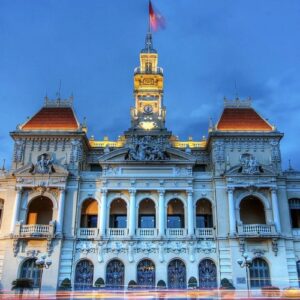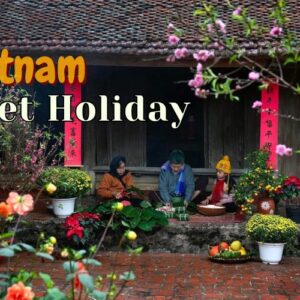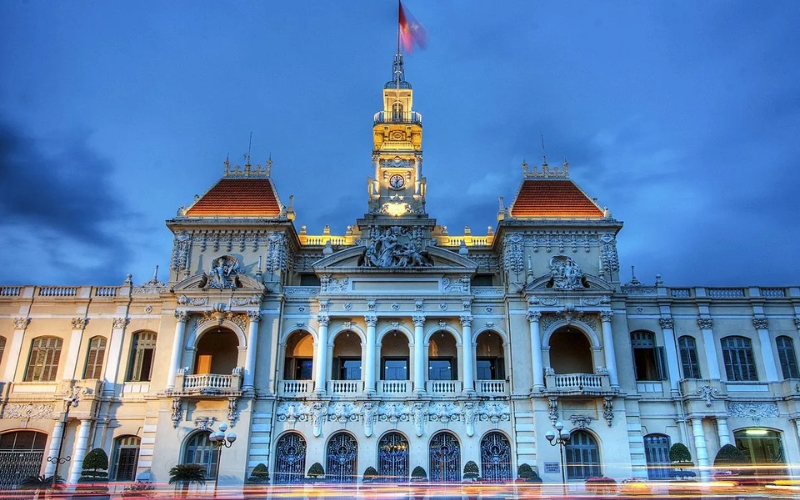
Ho Chi Minh City culture is a harmonious blend of tradition and modernity, reflecting the country’s rich heritage while embracing fast-paced global influences. In this blog, we explore the unique cultural highlights of this city, from bustling markets and iconic landmarks to a vibrant arts scene and diverse cuisine. Get ready to immerse yourself in a city where every moment invites you to explore the soul of Vietnam.
Cultural fusion
Ho Chi Minh City is also known as the Pearl of the East, and was once an important center of trade and cultural exchange during the colonial period, creating a unique blend of East and West. Its history is marked by architectural works that are a blend of East and West. Works such as Notre Dame Cathedral, the Central Post Office, and the Independence Palace are living proof of the French colonial period, with Gothic and Neoclassical architectural styles. The city also preserves many works with strong Asian influences such as the Jade Emperor Pagoda, Vinh Nghiem Pagoda, and Cho Lon, a Chinese area with ancient temples and a unique lifestyle.
The lifestyle in Ho Chi Minh City also reflects the harmony between the two cultures. The city’s residents have both the open, modern spirit of the West and the traditional values of the East, especially in family and community relationships. Events such as Christmas and Lunar New Year are held in parallel, showing a wonderful blend of foreign culture and national identity.
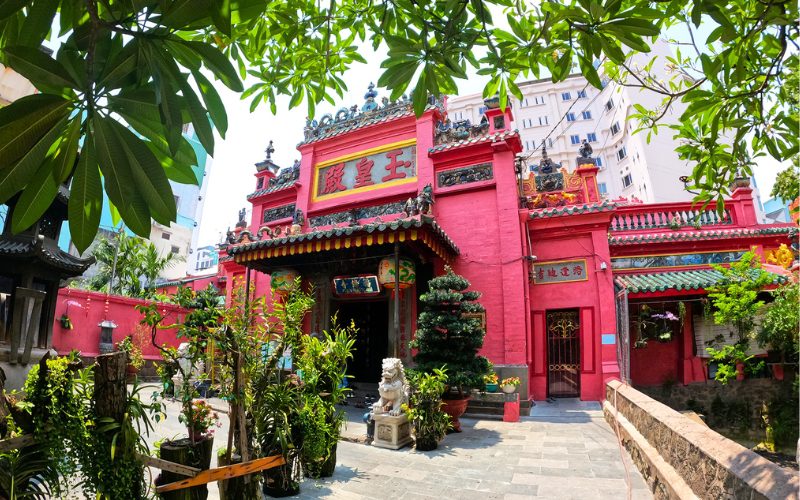
A View of Jade Emperor Pagoda
The Chinese Community
The Chinese community, especially concentrated in the Cho Lon area (Districts 5 and 6), is one of the groups with profound cultural influence in Ho Chi Minh City. The Chinese migrated here in the 17th century, bringing with them traditional values from their homeland and blending them with Vietnamese culture.
One of the most distinctive cultural symbols of the Chinese community is the ancient assembly halls such as Nghia An Assembly Hall, Quang Trieu Assembly Hall, and Ha Chuong Assembly Hall. These buildings are not only places for meetings and organizing community activities but also sacred religious spaces. In terms of architecture, the assembly halls are designed to stand out with classical architecture, curved tiled roofs, and elaborately carved reliefs depicting Chinese folk and religious stories.
In addition, the Chinese community also maintains its identity through major festivals such as Tet Nguyen Tieu, Thien Hau Festival, or Vu Lan Festival. On these occasions, the streets in Cho Lon area become more vibrant than ever, with lion and dragon dance troupes, colorful flags, and attractive traditional dishes. These can be dumplings, wonton noodles, stewed duck, or stir-fried dishes with traditional Chinese recipes.
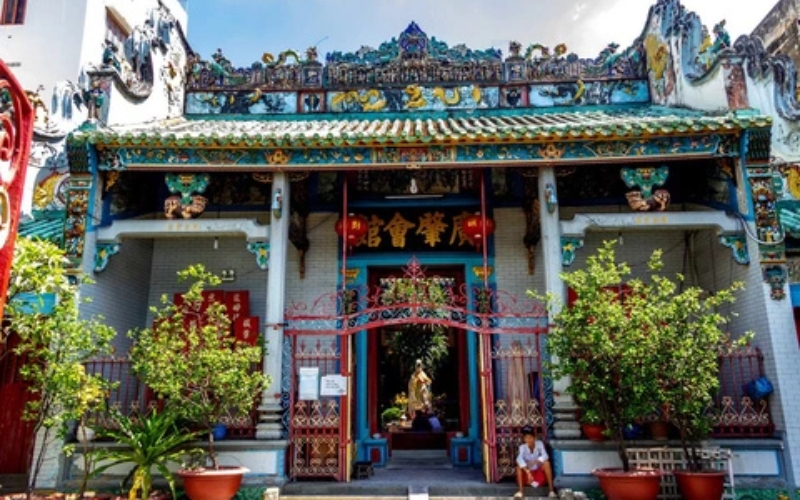
A Chinese Assembly Hall
Coffee culture
Filter coffee is a cultural beauty of Saigon that is completely different from other countries in the world. While Hanoi is famous for its ancient and quiet cafes, coming to Saigon you will be impressed with the unique type of filter coffee. This is not only a drink but also a part of the memories of many generations of people here, symbolizing a period when the slow, simple pace of life was still present.
Filter coffee in Saigon has been very popular since the 50s, although currently there are only a few shops left in small alleys, but it has been associated with many people here. It is a type of coffee that is brewed using a filter and always has to have a kettle of boiling water nearby. When enjoying a cup of filter coffee, visitors will feel a delicious and unique flavor that is completely different from other types of brew. Old Saigonese had the habit of sipping coffee in the morning, chatting with friends or reading the newspaper, enjoying the slow pace of life in the heart of the city.
Old filter coffee shops are often located in small alleys, preserving their rustic look, not following the trend of modernization. Places like filter coffee in Thiec market (District 11) or filter coffee in Phan Dinh Phung (District Phu Nhuan) have become familiar destinations for both locals and tourists who want to explore the old culture of Saigon.
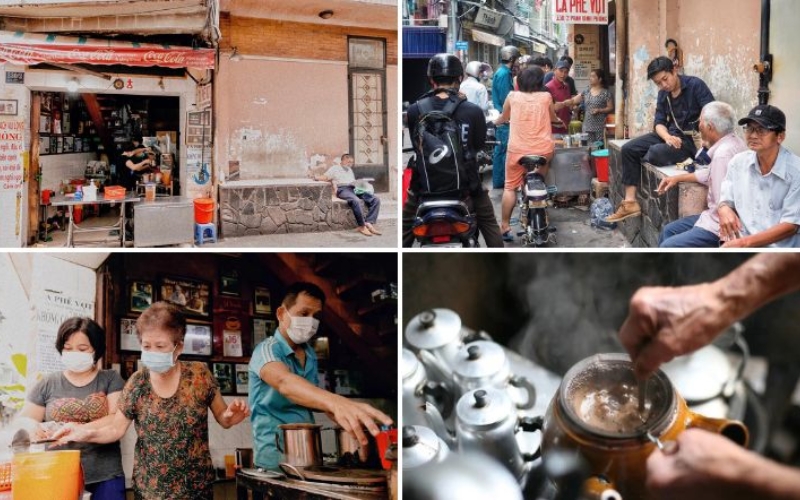
Filter coffee, a cultural beauty of Saigon
Unique architecture
Ho Chi Minh City’s architecture is a subtle blend of classic, traditional and modern features, creating an interesting picture. With a history of more than 300 years, Ho Chi Minh City today has architectural works that have become symbols attracting tourists visiting. Many of them were built from the French colonial period such as Notre Dame Cathedral built in Roman-Gothic architecture, the city post office and the Independence Palace.
In addition, there is the system of pagodas scattered throughout the city. Giac Lam Pagoda, one of the oldest pagodas in Saigon, stands out with its simple but solemn architecture. Thien Hau Pagoda, associated with the Chinese community, is a work of traditional Chinese architecture with blue tiled roofs and sophisticated carvings. The city today is also known for its skyscrapers, typically Landmark 81, the tallest building in Vietnam. Next to it is the Bitexco Tower, another symbol that attracts many tourists to admire the city from above.
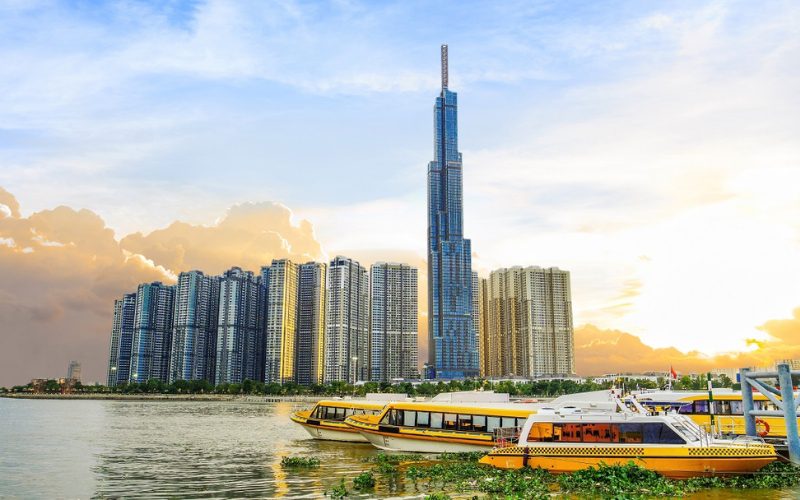
Landmark 81 in Ho Chi Minh City
A dynamic and modern lifestyle
Ho Chi Minh City’s urban culture is a vibrant and modern mix, offering a dynamic pace of life. It is not only a bustling economic hub but also a magnet for young people with a dynamic, youthful, and colorful lifestyle. The city has rapidly modernized over the past two decades, with sparkling skyscrapers and high-tech commercial centers. It is full of energy, reflected in the streets crowded with motorbikes, trendy cafes, and bustling markets. District 1, the city’s central area, is a hot spot for luxury hotels, world-class shopping malls, and iconic landmarks such as the Bitexco Financial Tower. Take a walk on Nguyen Hue Walking Street or explore the bustling Ben Thanh Market to see the city’s vibrant atmosphere.
Ho Chi Minh City’s nightlife is also diverse, from bustling night markets to glamorous nightclubs. Areas like Bui Vien Street are known for their vibrant party scene, while rooftop bars like Chill Skybar and Saigon Saigon Bar cater to those looking for a more sophisticated experience. It is also a smart city where digital innovations play a big part in everyday life. You can make cashless payments, use delivery apps, and ride-hailing services like Grab, making it easy to get around the city.
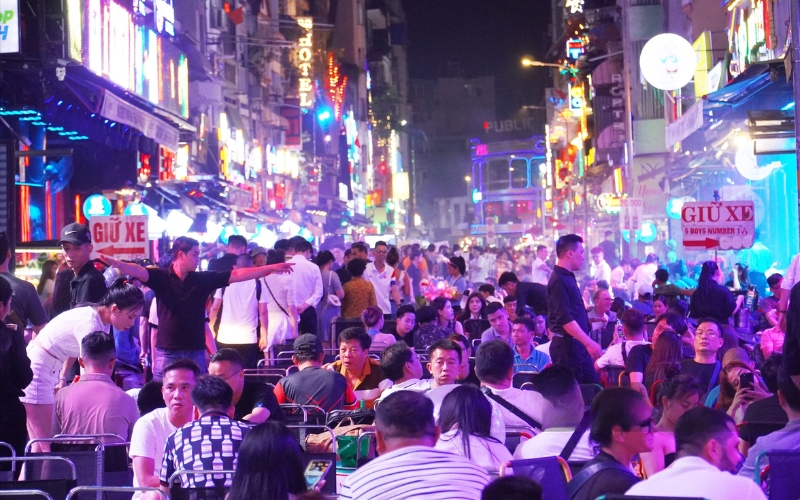
Exciting nightlife at Bui Vien Street
>>> Discover Ho Chi Minh City’s rich history and vibrant culture on this 5-day journey through iconic landmarks and timeless traditions.
Humanity and openness
One of the cultural beauties of Saigon is its people, famous for their friendliness and hospitality. The nature of Saigon people is generous and open-minded, honest and simple. You can easily talk to them or seek help from them. The friendliness of the city can be easily recognized from the little things, such as street vendors making sure you buy the freshest products, cafe staff talking to customers like old friends or strangers, and motorcycle taxi drivers trying to help you find your way.
Traditional festivals such as Tet and Mid-Autumn Festival not only enhance family values and traditions but are also places where everyone, whether locals or tourists, joins together, immersing themselves in the joyful and warm atmosphere of Vietnamese culture.
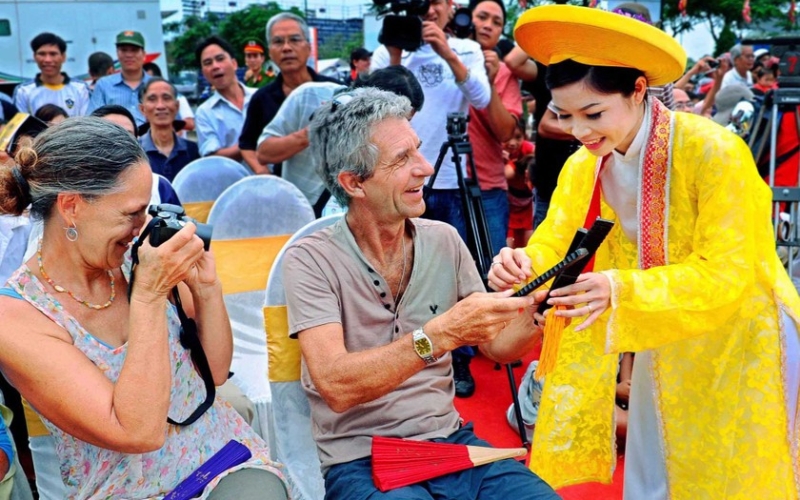
Saigonese is famous for their friendliness and hospitality
Diverse and attractive cuisine
Saigon’s culinary culture is always the top attraction of any tourist visiting here with its rich and unique cuisine. Not only the way of processing and eating but also the habits and customs of the people of Saigon. Visitors will discover many culinary cultures from countries around the world that have been introduced to Saigon since ancient times. Along with the constant absorption and innovation, it has brought a unique and rich Saigon culinary culture.
Saigon’s traditional cuisine combines the rich flavors of the South with sophistication in processing. Each dish has its own story and culture. You can easily find local dishes such as broken rice, noodles, bread, etc. everywhere in the city, at any time. It could be the noodle carts carrying dishes of Chinese origin that are deeply ingrained in the memories of the people of Saigon. Or Pho Tau Bay, street vendors, grilled squid skewers, sidewalk cafes, sidewalk iced tea…
Besides traditional cuisine, Saigon is also famous for many attractive dishes following modern trends, such as grilled rice paper, mixed rice paper, salad, shaken mango, green mango, and fried skewers. Along with that are famous culinary streets and restaurants with luxurious spaces, harmoniously combining Asian and European dishes, creating a unique culinary background.
Some iconic dishes in Saigon
>>> Embark on a flavorful journey as we guide you through some must-try restaurants in Ho Chi Minh City, where traditional Vietnamese dishes and international cuisines come together to create unforgettable dining experiences.
Arts and performances
Ho Chi Minh City is a vibrant cultural hub where the arts thrive in many forms, combining traditional heritage with modern creativity. From captivating water puppet shows to contemporary artworks and live music venues, this city offers a rich and diverse experience for art and culture lovers.
Traditional Performing Arts
The city is a gateway to Vietnam’s rich cultural heritage, and traditional performing arts remain an important part of the city’s artistic identity. One of the most iconic art forms is water puppetry, a long-standing tradition in Vietnam. The Golden Dragon Water Puppet Theatre in District 1 is the ideal place to witness this unique performance. The puppets are skillfully manipulated in a shallow pool of water, recreating stories from Vietnamese folklore, mythology, and rural life. This experience is further enhanced by live traditional music and singing, performed with instruments such as the monochord and bamboo flute.
Another highlight is cai luong, or Vietnamese opera, which combines singing, music, and theatrical storytelling. Originating in the Mekong Delta, the genre often features themes of love, loyalty, and family, conveyed through expressive acting and poignant melodies. Performances are held in dedicated theatres and during cultural festivals, offering visitors an immersive experience in Vietnam’s artistic traditions.
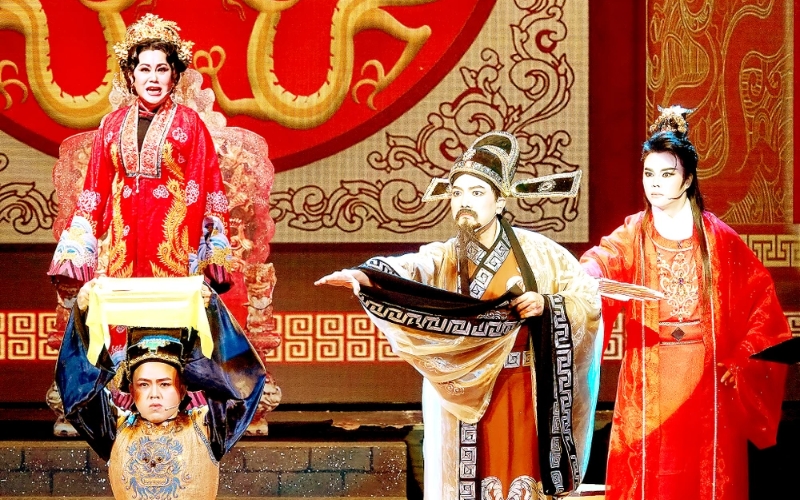
Cai Luong
Contemporary Arts Scene
In recent years, Ho Chi Minh City has emerged as a hub for contemporary art. Galleries such as Galerie Quynh, The Factory Contemporary Arts Centre, and Vin Gallery showcase innovative works that combine traditional techniques with modern ideas. These spaces often host exhibitions, workshops, and artist talks, making them vibrant hubs of artistic dialogue.
In addition to galleries, street art has taken root in Ho Chi Minh City, with colorful murals and graffiti reflecting urban life, telling the story of the city’s past, present, and aspirations for the future. This visual vibrancy is a testament to the city’s openness to new forms of artistic expression.
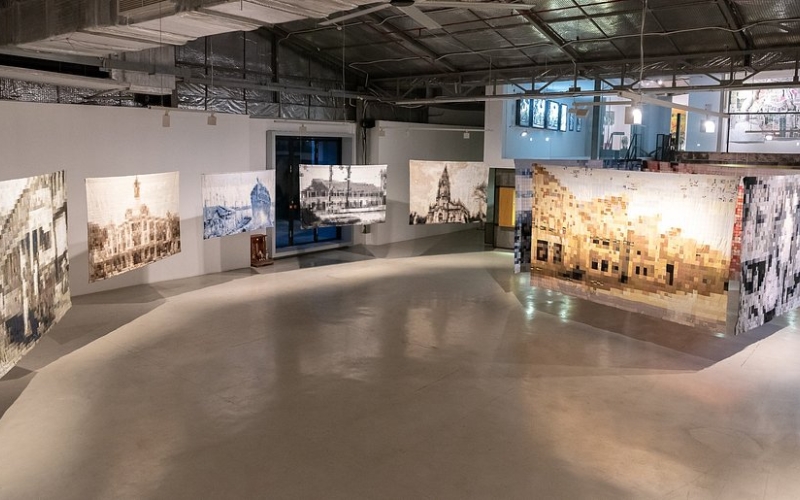
The Factory Contemporary Arts Centre
Live Music and Performances
Music is at the heart of Ho Chi Minh City’s cultural scene, with a vibrant scene to suit every taste. For those who prefer a more private space, acoustic cafes like Yoko Café and Acoustic Bar offer live performances by local artists, creating the perfect cozy atmosphere to unwind after a long day. These venues often feature a mix of Vietnamese folk music and international hits, appealing to both locals and expats.
For a more luxurious experience, check out rooftop bars like Chill Skybar and Saigon Saigon Bar, which offer stunning skyline views. These venues are popular with young people and tourists who want to enjoy the city’s nightlife with a touch of sophistication. In addition, Ho Chi Minh City is also home to international music festivals that attract large audiences with performers from Vietnam and many other countries.
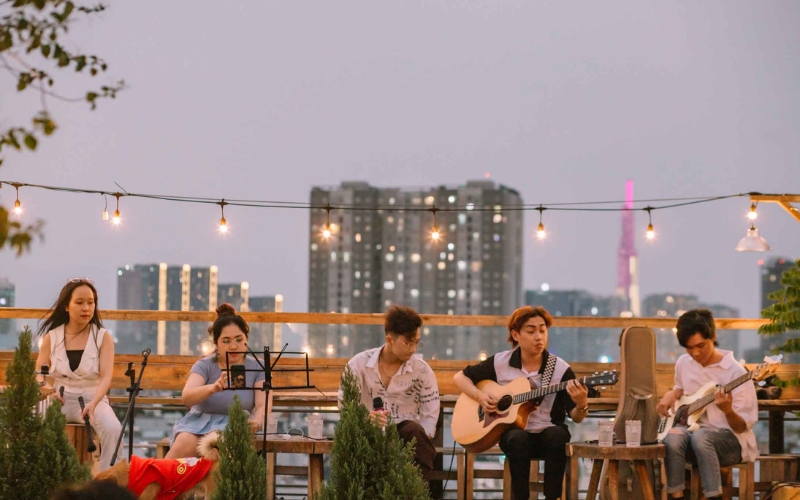
An acoustic cafe in Ho Chi Minh City
>>> Explore the vibrant energy of Ho Chi Minh City and the serene beauty of the Mekong Delta on this immersive 3-day adventure.
Ho Chi Minh City, with its vibrant culture shaped by centuries of history, dynamic modernity, and the warmth of its people, creates a unique blend that leaves a lasting impression. Whether you choose to explore the city for a few days or immerse yourself in its vibrant culture, Ho Chi Minh City is guaranteed to capture your heart and inspire your soul. Contact us now to make your trip to this city unforgettable.
Read more:
